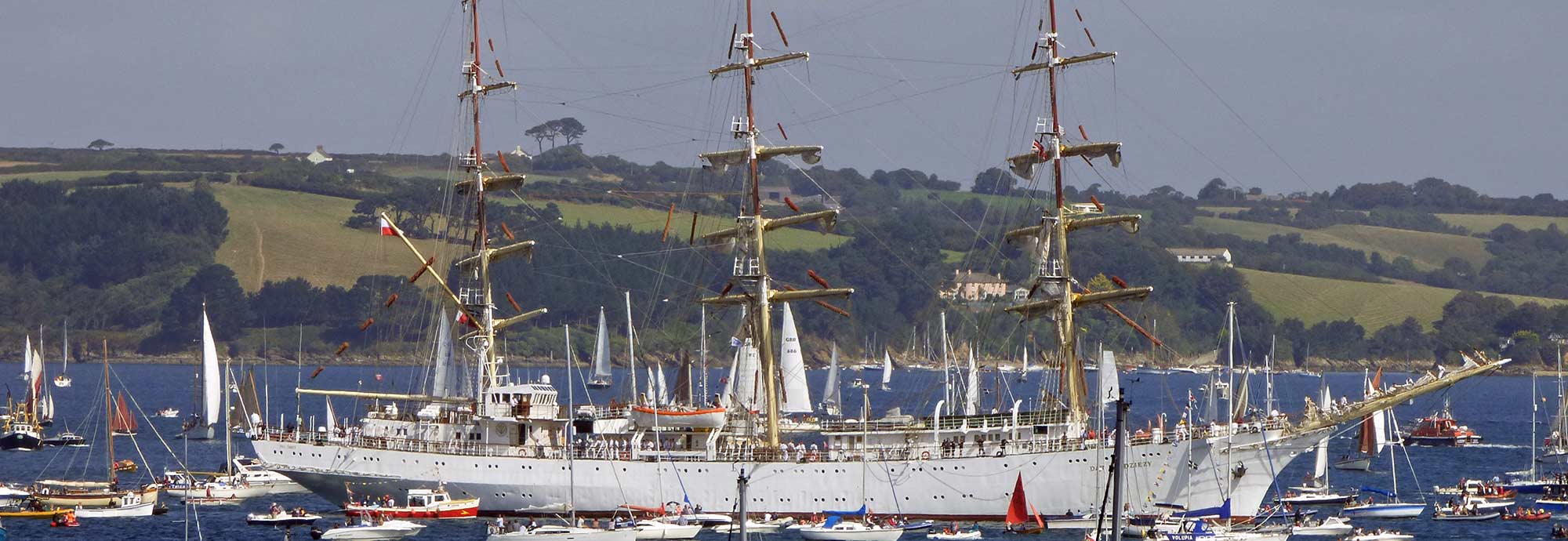

By Lynne Vosper
‘I must go down to the seas again, to the lonely sea and the sky,
And all I ask is a tall ship and a star to steer her by,
And the wheel’s kick and the wind’s song and the white sail’s shaking,
And a grey mist on the sea’s face, and a grey dawn breaking’.
‘Sea Fever’ by John Masefield
Falmouth has the third largest natural deep-water harbour in the world and Tall Ships are no strangers to the Fal Estuary. Falmouth is steeped in maritime history and was the hub of international trade when sail reigned supreme.
The Tall Ship’s Race Magellan-Elcano 2023 marked the sixth time Falmouth has hosted Tall Ships, more than any other port in the UK.
The term ‘Tall Ship’ is often used generically to describe large classic, sailing vessels that are traditionally rigged, referring to the way the ropes and sails are organized, with a high mast that are used today for sail training and education voyages under sail.
In 1953, a retired London solicitor, Bernard Morgan, first thought of holding an international race for sail training ships, manned by crews drawn from cadets and seamen under training and their officers. He felt that after the Second World War, when tall ships had long been replaced by steam-powered ships, that a one-off race would be a fitting way to commemorate the end of the Age of Sail.
The Portuguese Ambassador to the UK, Pedro Teotónio Pereira, was very supportive of the idea and believed that such a race would foster good relations and understanding between young people of seafaring nations and would bring together the last of the world’s magnificent tall ships.
Support for the idea came from many influential people including Lieutenant-Commander AH Godwin, a former nautical instructor at Gordonstoun, Mr Alan H Paul, secretary of the Royal Ocean Racing Club, Admiral Lord Louis Mountbatten, the First Sea Lord, and His Royal Highness the Duke of Edinburgh, leading to the formation of the Sail Training International Race Committee in March 1955.
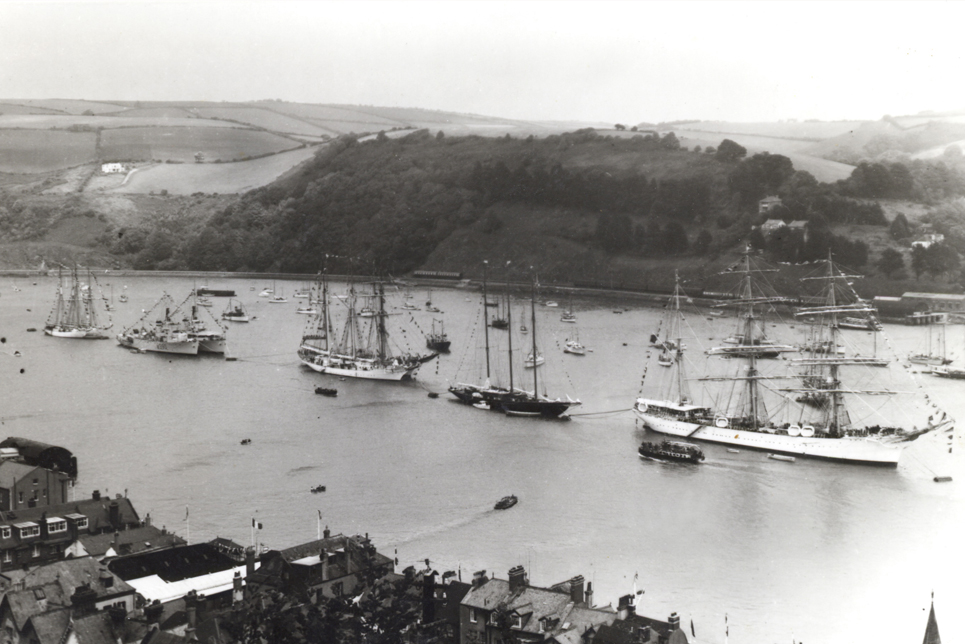
Tall Ships moored in the River Dart in July 1956 before for the first race from Torbay to Lisbon ©Sail Training International
The first Tall Ships’ Race was held in July 1956 from Torbay to Lisbon, Portugal. There were 21 firm starters that were divided into two classes, twelve sailing ships of large tonnage formed the first class, and the remaining nine, each under 100 tons, formed the second class. The start of the 780-mile race to Lisbon was watched from Berry Head and other vantage points around Torbay. It was a spectacular sight, and the first opportunity to see such ships for many people. The Race was started by Prince Phillip, Duke of Edinburgh.
The British ketch Moyana built in 1899 was the winner of the race on time allowance and was presented with the international trophy by the President of Portugal.
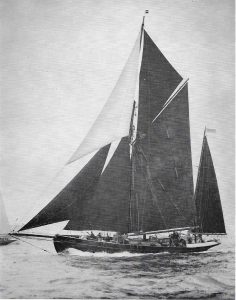
Moyana, a ketch of 103 tons Thames measurement, entered by the School of Navigation, Southampton
winner of the principal award in the 780-mile race.
Times Publishing Company Ltd

The international trophy presented by the President of Portugal to the winner Moyana
Times Publishing Company Ltd
When the Moyana was on her return voyage on 29 July, she met a heavy gale, and shipping water she became unmanageable. Distress signals were seen by the MV Clan Maclean, whose skilful master laid her alongside and rescued all 23 hands, including 15 cadets, together with their trophy.

The Moyana shortly before she sank off the Lizard on the coast of Cornwall
Times Publishing Company Ltd
The spectacular 1956 Race proved to be popular with the public and media who coined the phrase “Tall Ships’ Race”. The Sail Training International Race Committee went on to form the Sail Training Association (STA) with the aim of putting Races on a permanent footing. In 1995 this organization became known as the International Sail Training Association, remaining as a subsidiary of the main STA charity with unchanged aims and objectives, but with an additional remit to foster and promote sail training at an international level. The modern Sail Training International was formed in 2002 and granted charitable status in 2003.
In 1972 Cutty Sark Scots Whisky started sponsoring the races and continued until 2002, after which time Sail Training International have been responsible for organizing the Tall Ships’ Races.
The events consist of two races and a period of cruising in company in European waters.
From 1972 to 2002 the Tall Ships’ Races were branded with the Cutty Sark Tall Ships’ Race name and logo. During this period the major prize awarded at the end of the Cutty Sark Tall Ships’ Race was the magnificent solid silver Cutty Sark trophy, a model of the famous ship that was anchored in Falmouth Harbour from 1923 to 1938 and is probably the most famous merchant ship in British maritime history.
The trophy was presented by the race sponsors annually to the ship’s crew which, in the opinion of the captains and crews who participated, had contributed the most to international understanding and friendship during the race series. A host of other prizes and trophies are awarded to the different classes of vessels taking part in the races.
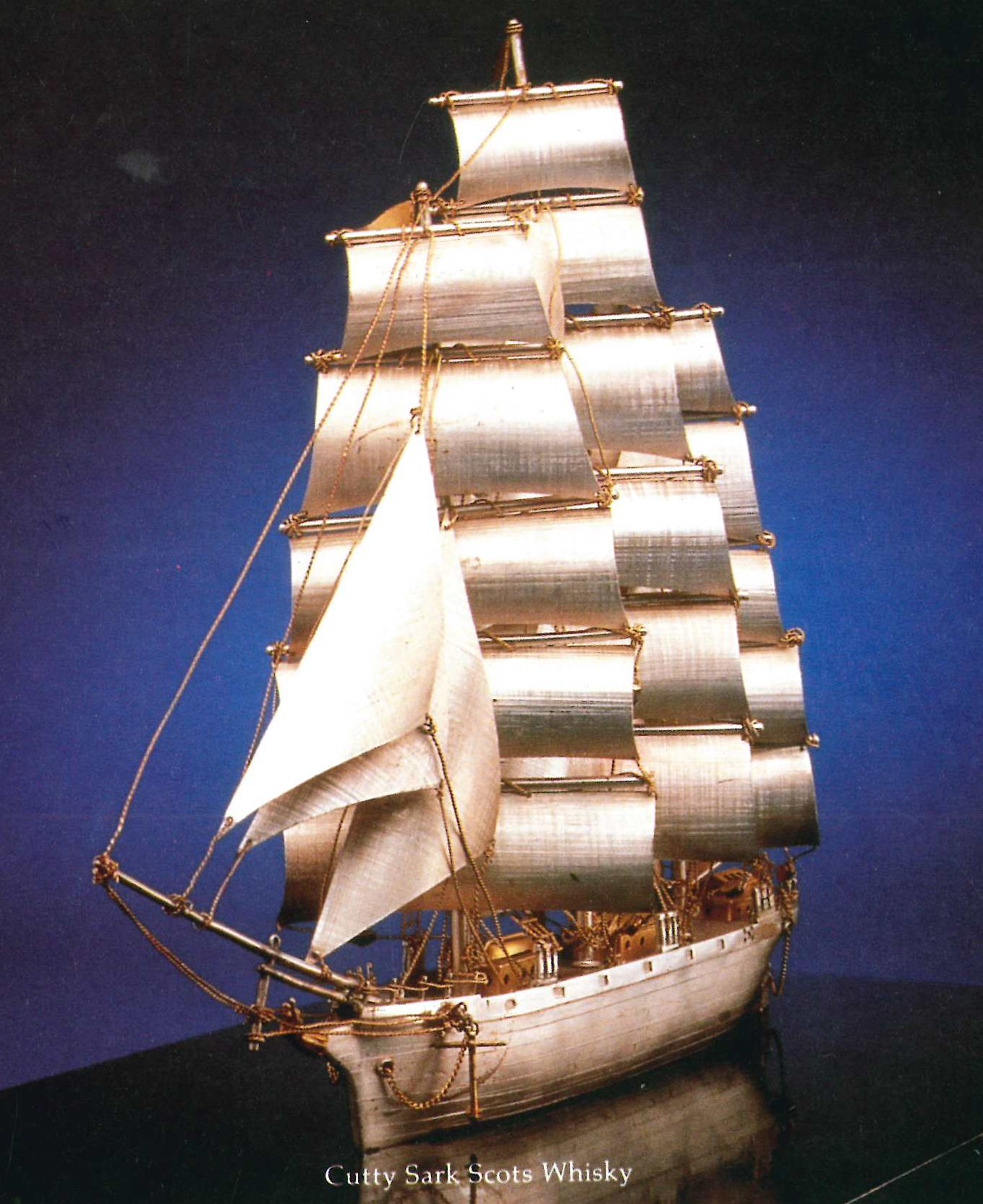
Image of Cutty Sark Scots Whisky Trophy
From “Tall Ships and the Cutty Sark” by Paul Bishop
‘Tall Ship’ is a term used to describe large, classic, sailing vessels that are traditionally rigged with a high mast and in the context of the Tall Ships’ Race participating ships range from yachts to the large square-rigged sail training ships run by charities, schools and navies of many countries. The term is also a technically defined term used by Sailing Training International as four classes of vessel with a
length overall (LOA). This is the length between the forward end of the stem post and the after end of the stern post. It does not include the bowsprit, pulpit or any other extension at the bow or stern.
Class A
All square-rigged vessels (barque, barquentine, brig, brigantine or ship rigged) with a length of hull (LOA) of over 24 metres and all other vessels more than 40 metres LOA, regardless of rig.
Class B
Traditionally rigged vessels (gaff rigged sloops, ketches, yawls and schooners) with an LOA of less than 40 metres and with a waterline length (LWL) of at least 9.14 metres.
Class C
Modern rigged vessels (Burmudan rigged sloops, ketches, yawls and schooners) with an LOA of less than 40 metres and with a waterline length (LWL) of at least 9.14 metres not carrying spinnaker-like sails.
Class D
Modern rigged vessels (Bermudan rigged sloops, ketches, yawls and schooners) with an LOA of less than 40 metres and with a waterline length (LWL) of at least 9.14 metres carrying spinnaker-like sails.
The historic port of Falmouth has hosted six Tall Ships’ Races in 1966, 1982, 1998, 2008, 2014 and 2023.
1966
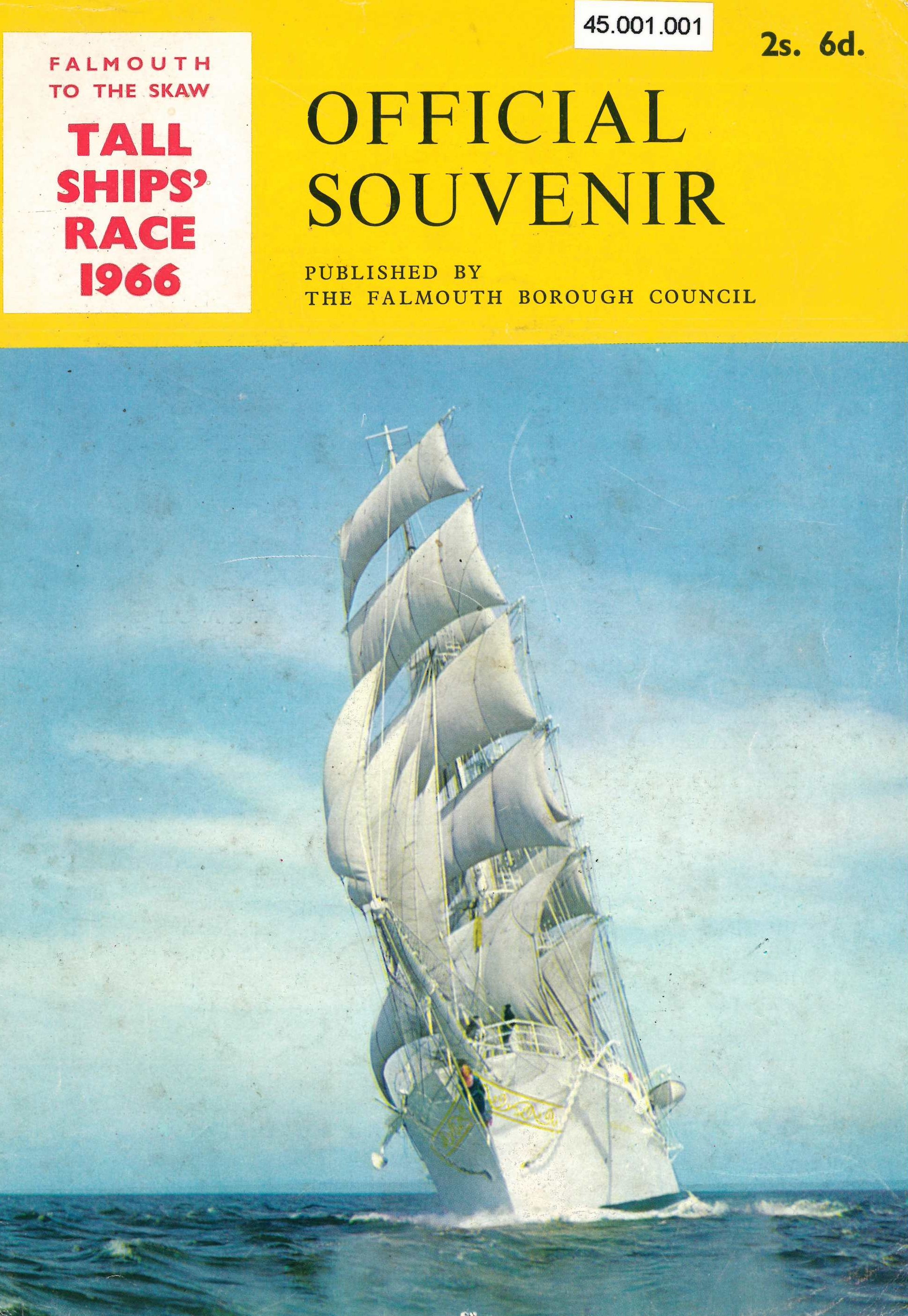
Programme for 1966 Tall Ships’ Race from Falmouth
Copy held by Bartlett Maritime Research Centre and Library, NMMC
1966 was the first time the Tall Ships’ Race had been started from Falmouth. The route was from Falmouth to the Skaw in Denmark, starting on Saturday 9 July 1966. The 800-mile course took the Tall Ships from Falmouth, through the Channel and across the North Sea to a finishing point off the Skaw, the northernmost tip of Jutland, in Denmark.
There were 28 entries representing six nations consisting of five fully rigged Class ‘A’ vessels, all from Norway and Denmark, 10 Class ‘B’ schooners from Sweden, the Netherlands and Great Britain, and 13 Class ‘C’ craft, ocean racers, mainly from the UK but including two French boats and one from the Netherlands.
The Chairman of the 1966 Tall Ships Committee was Mr Philip Fox, of GC Fox and Co Ltd, Lloyd’s Agents, established in the town since 1762.
1982
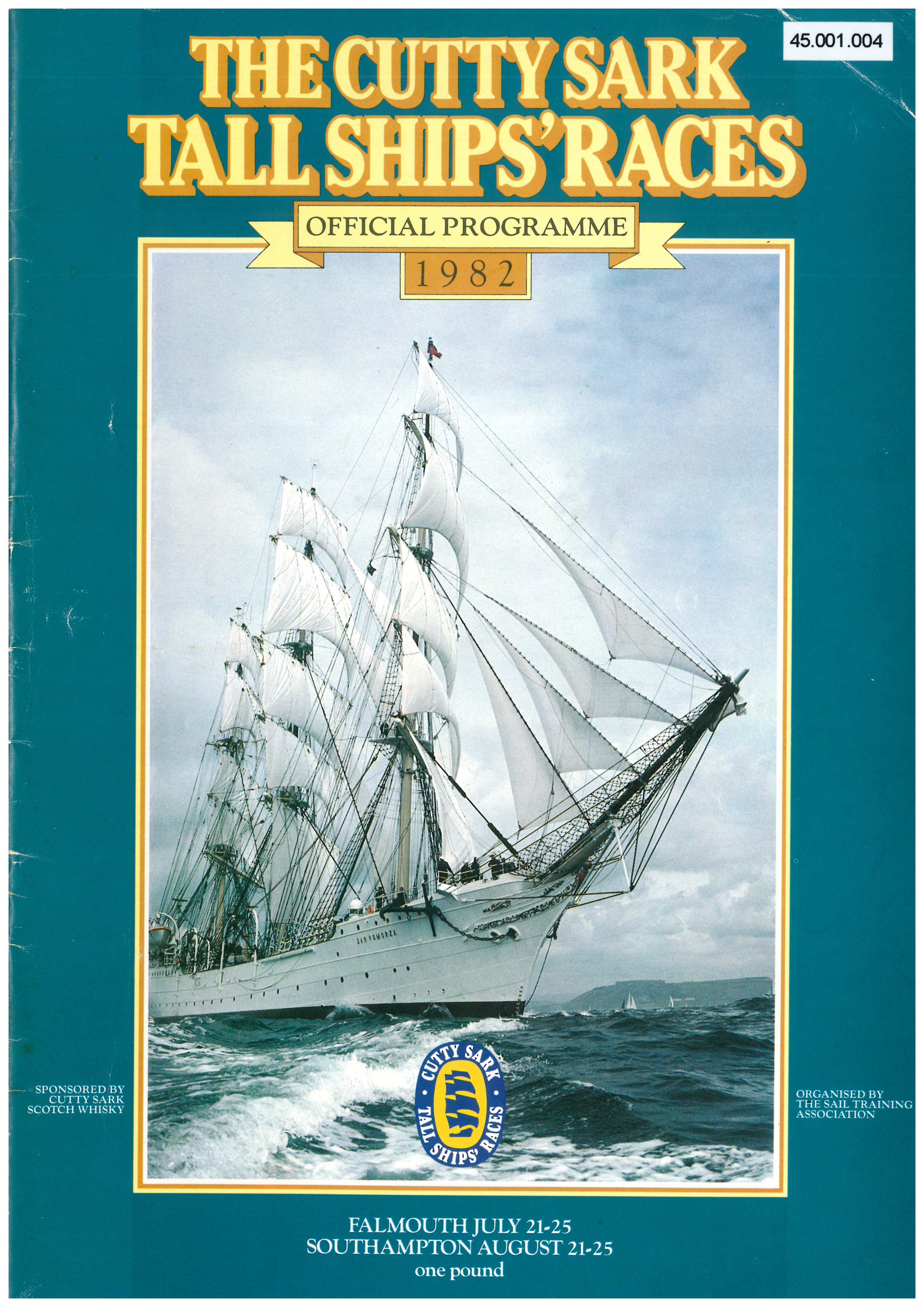
Programme for 1982 Tall Ships’ Race from Falmouth
Copy held by Bartlett Maritime Research Centre and Library, NMMC
The first leg of the Cutty Sark Tall Ship’s Race on Sunday 25 July 1982 was started by the Duke of Edinburgh from HMS Londonderry in Falmouth Bay. The fleet sailed from Falmouth to Lisbon in Portugal then from Lisbon to Vigo in Spain and the final leg of the race was from Vigo to Southampton.
There were around 80 ships in the race, and they were a wonderful sight as they left Falmouth.
The Dar Mlodziezy sailed on her maiden voyage in the 1982 Tall Ships’ Race and round-the-clock working was needed to make her ready for the trip. She was the largest square rigger entered for the race at 375 ft loa, with 45 officers and 159 trainees.
John Hick, was Chairman of the Cutty Sark Tall Ships’ Race local organizing committee, known as Sail Falmouth 82 Committee, which was formed to organize events connected with the start of the Tall Ships’ Race and to raise funds to cover running costs of staging the event and has been Chairman of Falmouth Tall Ships Association for each subsequent race from Falmouth.
1998
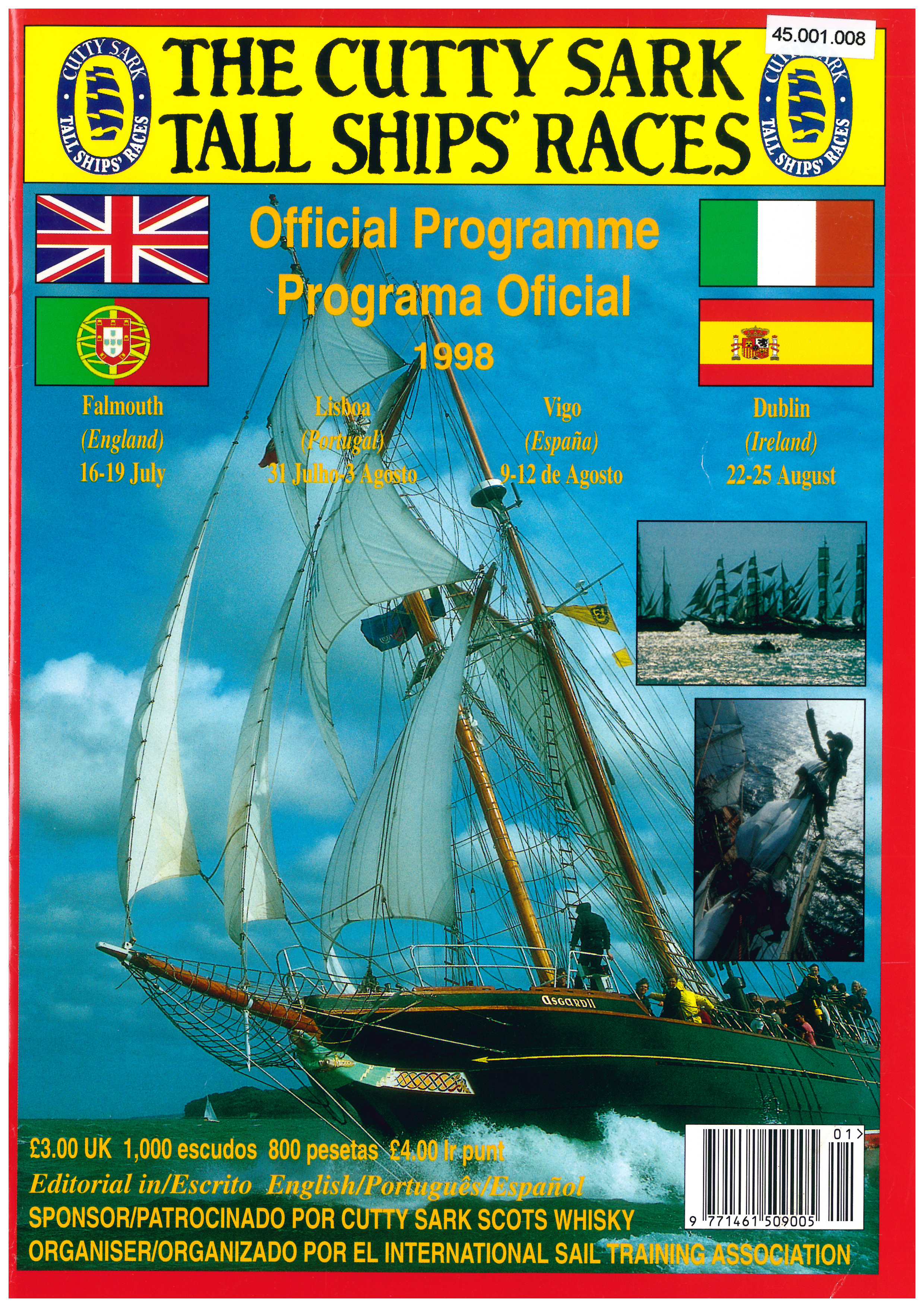
Programme for 1998 Tall Ships’ Race from Falmouth
Copy held by Bartlett Maritime Research Centre and Library, NMMC
A huge fleet of about 90 stunning vessels from 18 different nations left Falmouth on Sunday 19 July 1998 bound for Lisbon, 740 miles away across the notorious Bay of Biscay. From Lisbon they sailed for Vigo in northern Spain and the final leg of the voyage was to Dublin.
The ships were berthed in Falmouth with some 2,000 crew and cadets aged between 16 and 25 enjoying Cornish hospitality with sports events, a parade of the cadets through the town, and the Parade of Sail before the race start. The ships gathered at the head of Carrick Roads before circling Falmouth Bay under full sail and commencing the race to the east of Rosemullion Head.
The Princess Royal, Princess Anne, accompanied by her husband Captain Tim Laurence, and Lord Lieutenant of Cornwall, Lady Mary Holborow arrived at Falmouth Docks and viewed the Kruzenshtern, Mir and Sagres. The Princess Royal received the salute of the ships from HMS Nottingham and fired the gun to start the 1998 Tall Ships’ Race.
A comment from the programme for the 2008 Tall Ships’ Race from Falmouth stated “The way in which the port entertains the crew is often one of the most important aspects of the event. Falmouth was voted the best port by crews during the Tall Ships’ Race in 1998”.
2008

Programme for 2008 Funchal 500 Tall Ships’ Regatta from Falmouth
Copy held by Bartlett Maritime Research Centre and Library, NMMC
The Funchal 500 Tall Ships’ Regatta was the centrepiece of year-long celebrations of the 500th anniversary of the first settlement on the Portuguese island of Madeira.
The race from Falmouth began on Saturday 13 September with ships from all over the globe including Mexico, Uruguay, Russia, Bulgaria, Poland, Oman, Belgium, The Netherlands, Spain, Latvia, Portugal, Germany and the UK taking part. Traditionally at Tall Ships’ events the host town organizes inter-ship competitions for the crews and confirms the team spirit built up whilst on board.
A stunning Parade of Sail took place around Falmouth Bay with the ships surrounded by a flotilla of leisure craft. The Tall Ships left Falmouth bound for Ilhavo in Portugal for more celebrations and on 23 September raced to Funchal, Madeira for a Maritime Festival, and major celebrations in the city. Falmouth to Ilhavo is 630 nautical miles. The next stage to Funchal was a further 630 nautical miles.
An estimated 130,000 people, well over the number expected, had descended on Falmouth and the surrounding area to watch the start of the race.
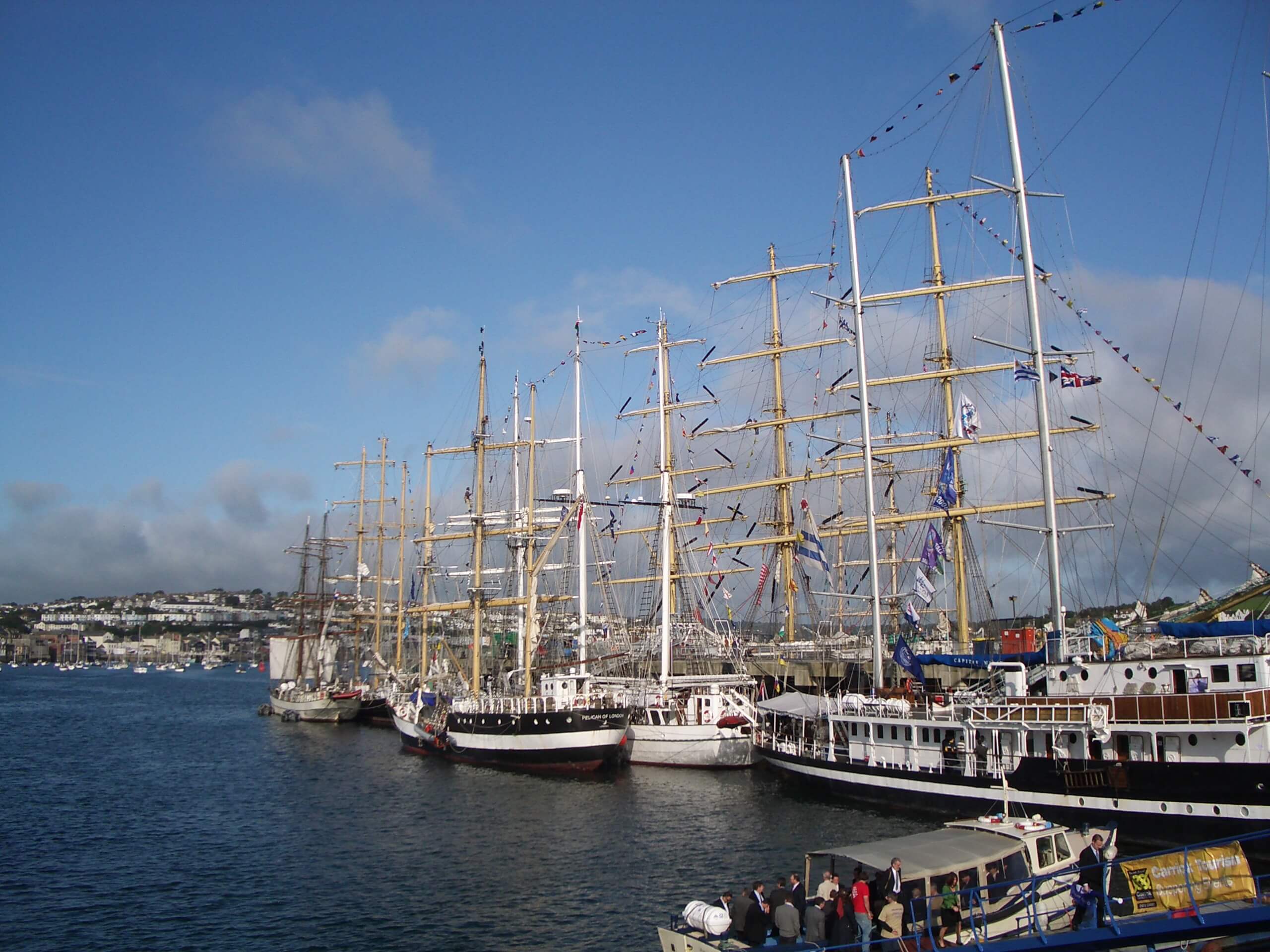
Tall Ships alongside the County Wharf, at A & P Falmouth, 2008. ©LM Vosper
2014
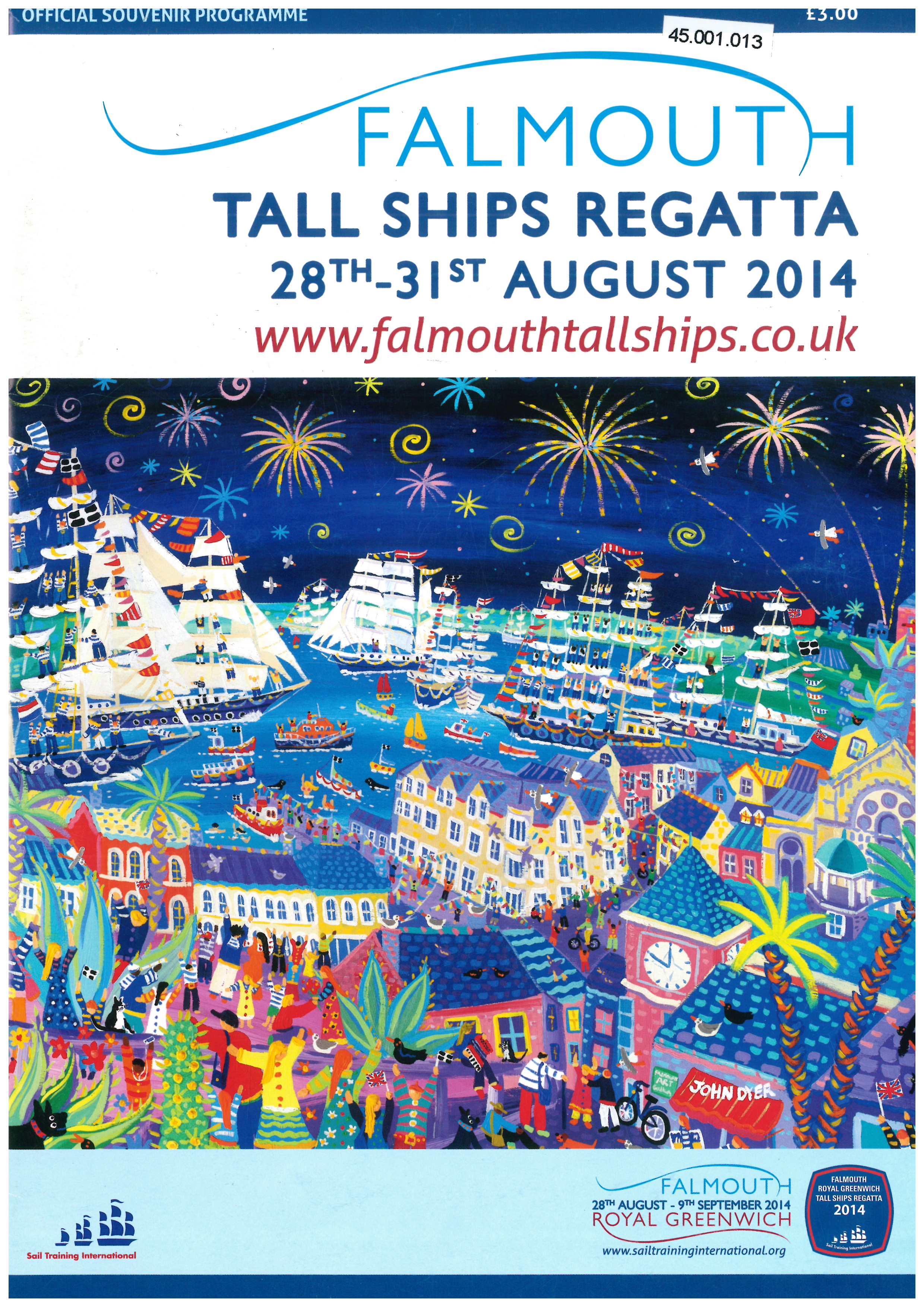
Programme for 2014 Tall Ships’ Race from Falmouth-Royal Greenwich Tall Ships Regatta
Copy held by Bartlett Maritime Research Centre and Library, NMMC
Forty-four ships, including 12 Class A vessels, took part in the Falmouth-Royal Greenwich Tall Ships’ Regatta, leaving Falmouth on Sunday 31 August and heading for the Isle of Wight before continuing on to London, sailing up the River Thames to the finish port of Royal Greenwich.
It is believed that the Regatta may have injected upwards of £15m into the Cornish economy, with a social and economic impact for Falmouth and Cornwall. More than 100,000 people lined the coast to watch the Parade of Sail in Falmouth Bay.
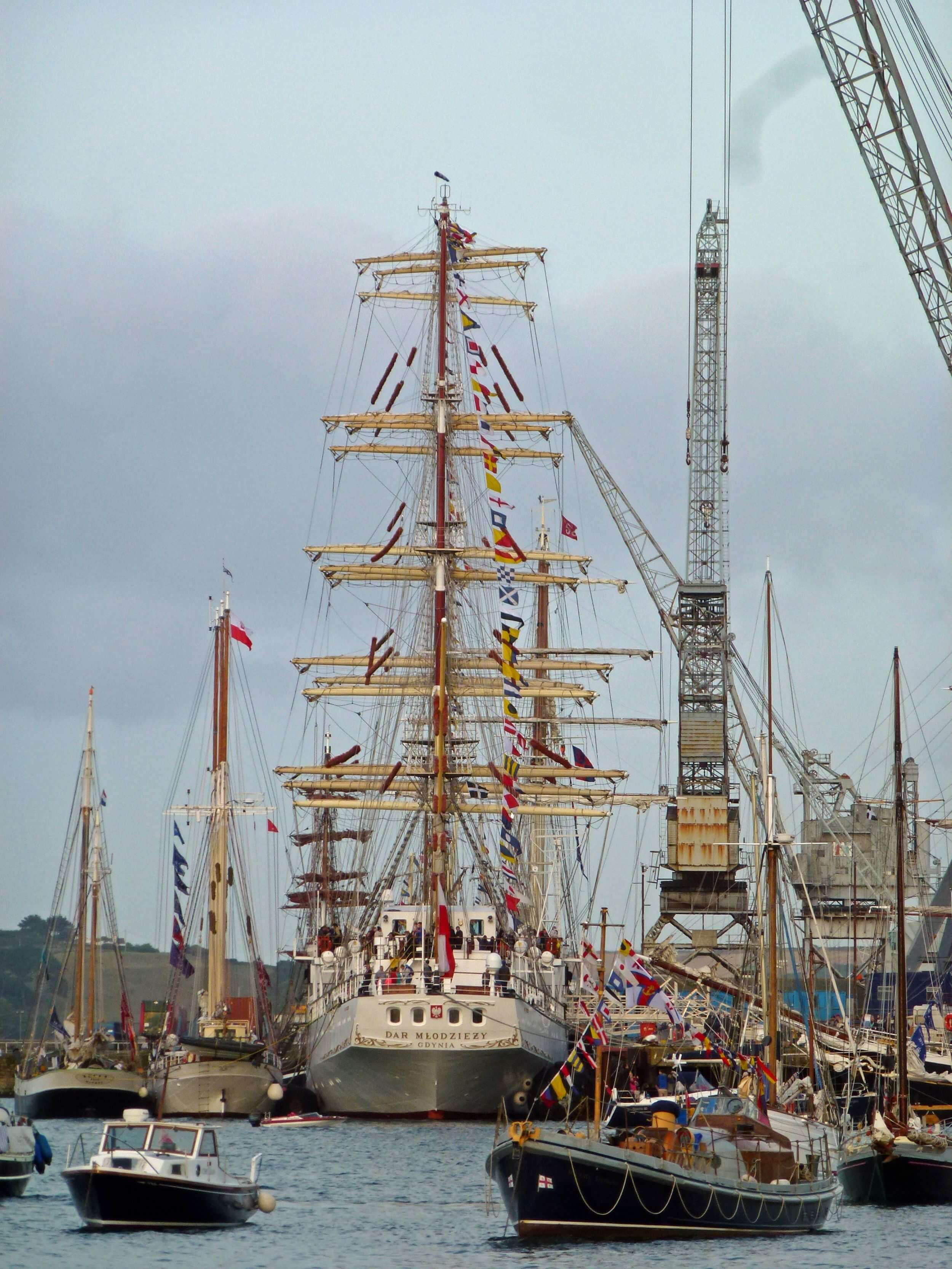
Polish Tall Ship Dar Mlodziezy at A & P Falmouth 2014 ©LM Vosper

Polish Tall Ship Dar Mlodziezy preparing for the Parade of Sail 2014 ©LM Vosper
The internationally acclaimed local artist John Dyer supported the 2008 Funchal 500 Tall Ships’ Regatta and the 2014 Falmouth to Royal Greenwich Tall Ships’ Regatta as the official Artist in Residence and his vibrant Tall Ships paintings featured on the covers of the official programmes for those events.
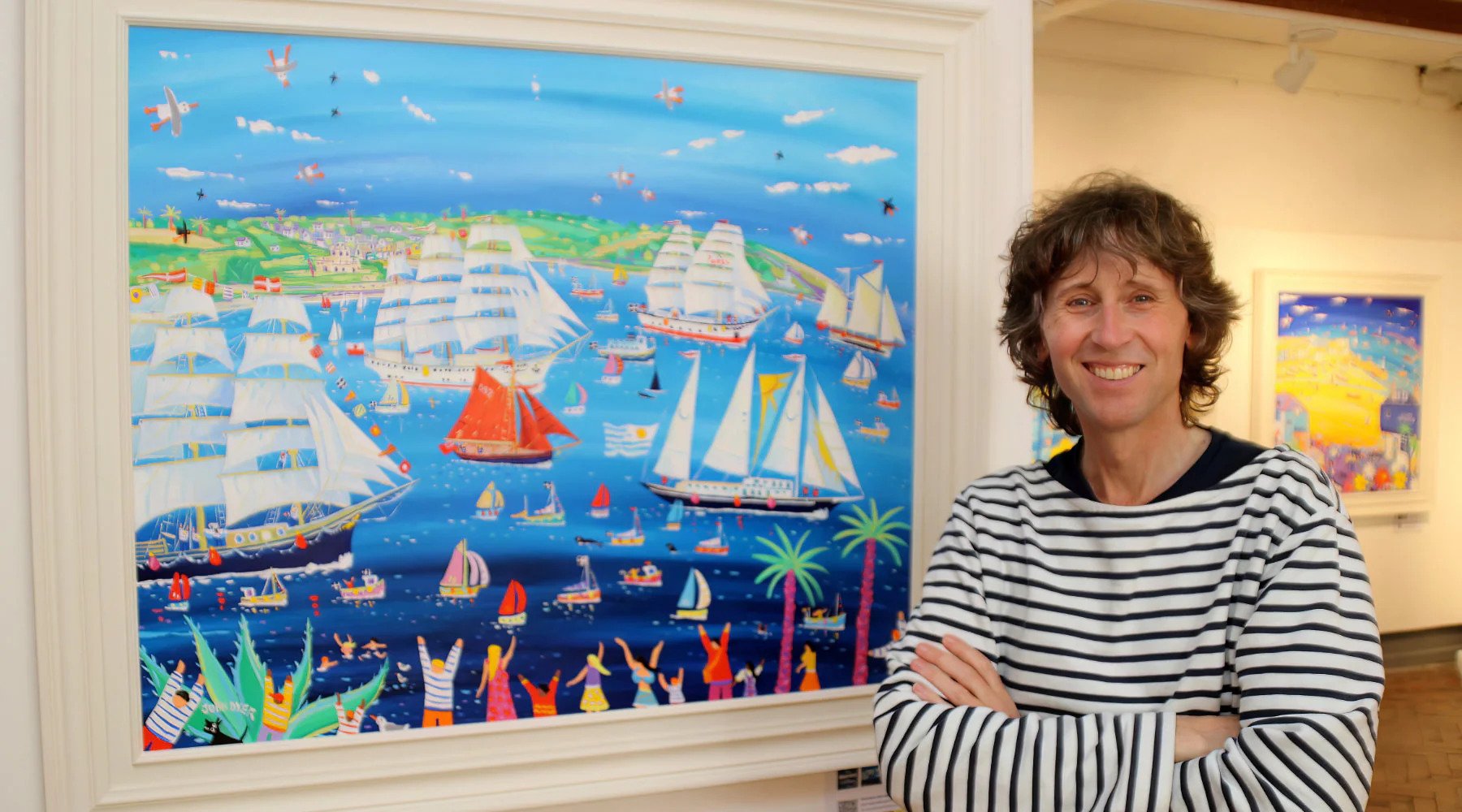
John Dyer, Artist in Residence for Tall Ships Races 2008, 2014 and 2023,
at the unveiling of the official painting for 2023 ‘Tall Ships and Small Ships’
(Falmouth Packet, 5 July 2023)
2023
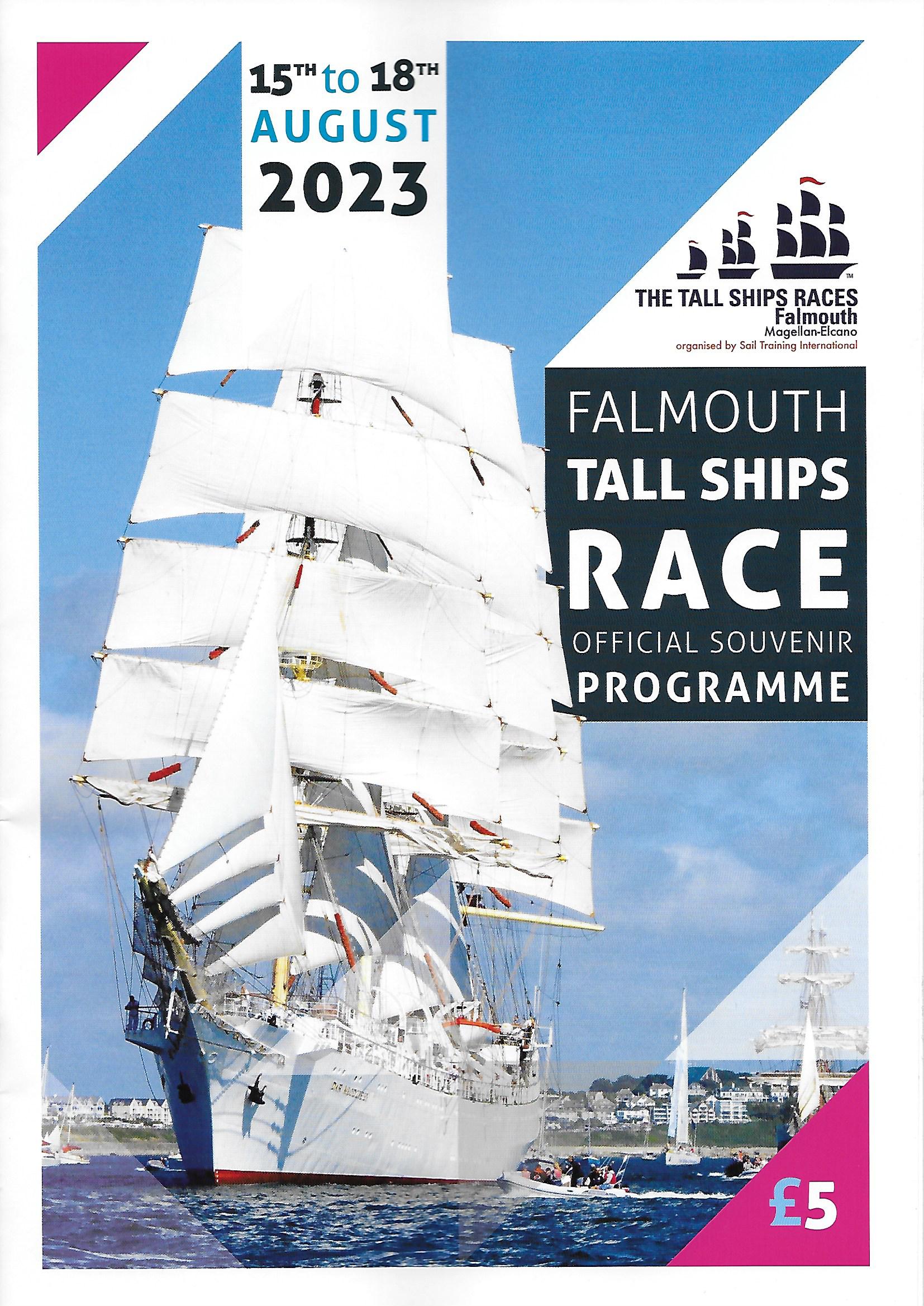
Programme for 2023 Tall Ships’ Race from Falmouth
Copy held by Bartlett Maritime Research Centre and Library, NMMC
The 2020 and 2021 Falmouth Tall Ships’ festivals were cancelled due to Covid-19 uncertainty which was disappointing but understandable. However, in 2023 Falmouth once again hosted the festival, the sixth time it had done so.
The race was from Falmouth to A Coruña in Spain, then they will Cruise in Company to Lisbon in Portugal, and complete the race to Cadiz in Spain.
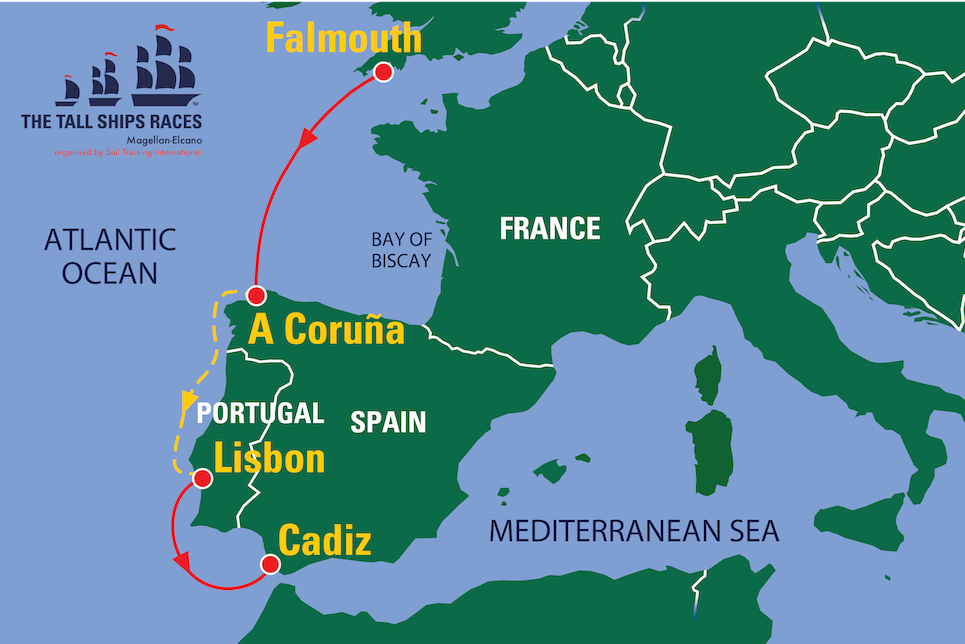
The route of the 2023 Tall Ships’ Race
The Tall Ships Magellan Elcano 2023 series of races were held to celebrate the first circumnavigation of the globe by Portuguese explorer Ferdinand Magellan and Basque explorer Juan Sebastian Elcano over 500 years ago.
On 10 August 1519, five ships from Seville embarked on a voyage that took three years to complete with Elcano finally sailing his vessel back into Seville on 6 September 1522. Magellan was killed in the Philippines by natives in a skirmish and later 30 of his crew were murdered at a feast. Elcano took command of the ship Victoria eventually bringing it back to Spain. Of the initial 270 crew members, only Elcano and 17 men and one ship, the Victoria completed the return trip to Spain, but the expedition had accomplished its primary goal, to find a western route to the Spice Islands.
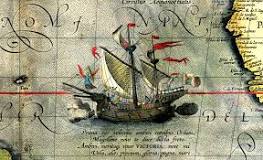
Juan Sebastian Elcano’s ship, the ‘Victoria’
The five Class A ships competing in the race were the Cuauhtémoc from Mexico, the Dar Mlodziezy from Poland, the Georg Stage from Denmark, the Fryderyk Chopin from Poland, and the Capitán Miranda from Uruguay. Maybe and Jolie Brise raced in Class B, and Juan de Langara, Stella Polare, Challenge Wales and Patricia in Class C and D.
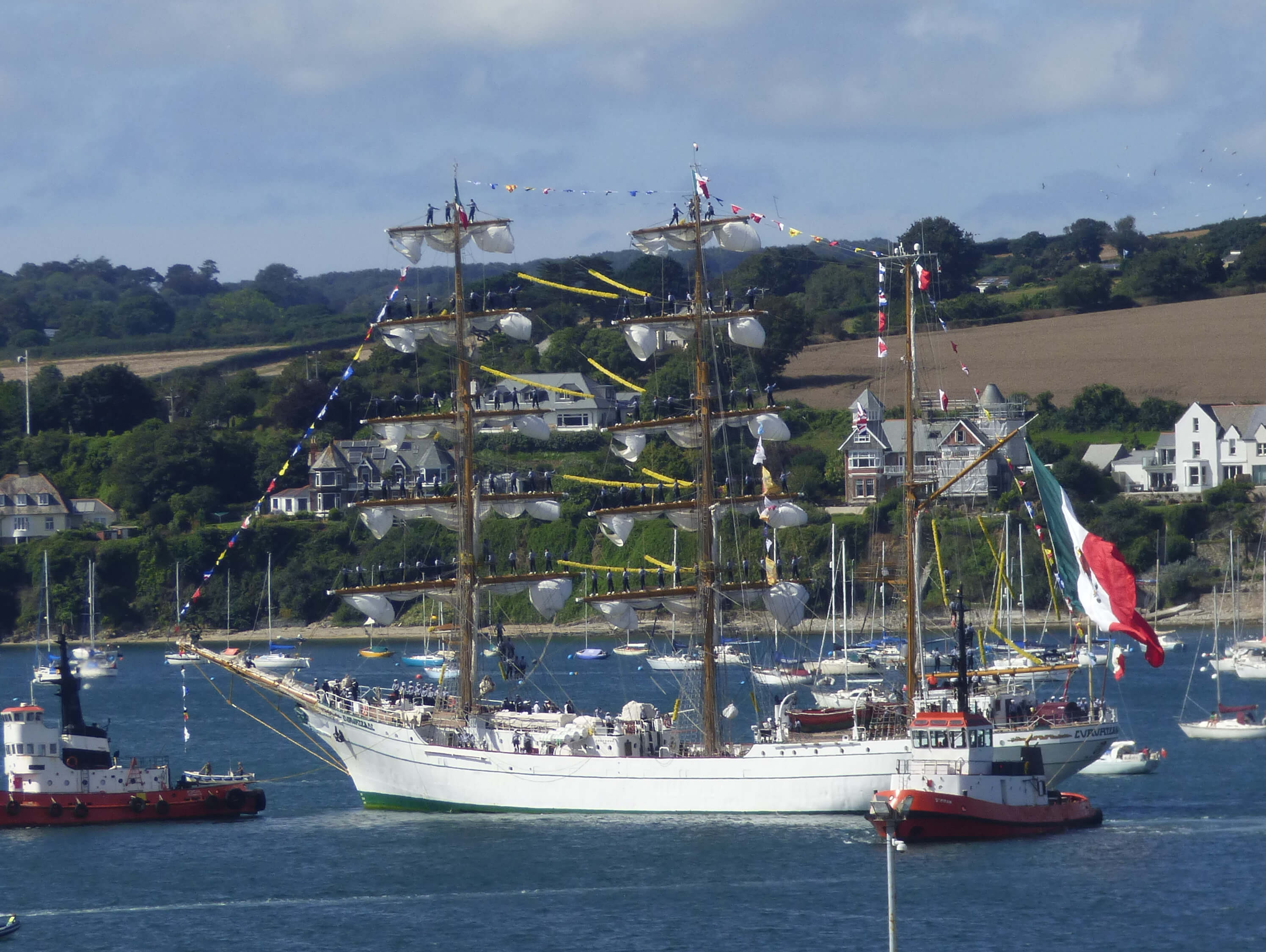
Mexican Tall Ship Cuauhtémoc arriving at Falmouth with crew manning the yards, 2023 © LM Vosper
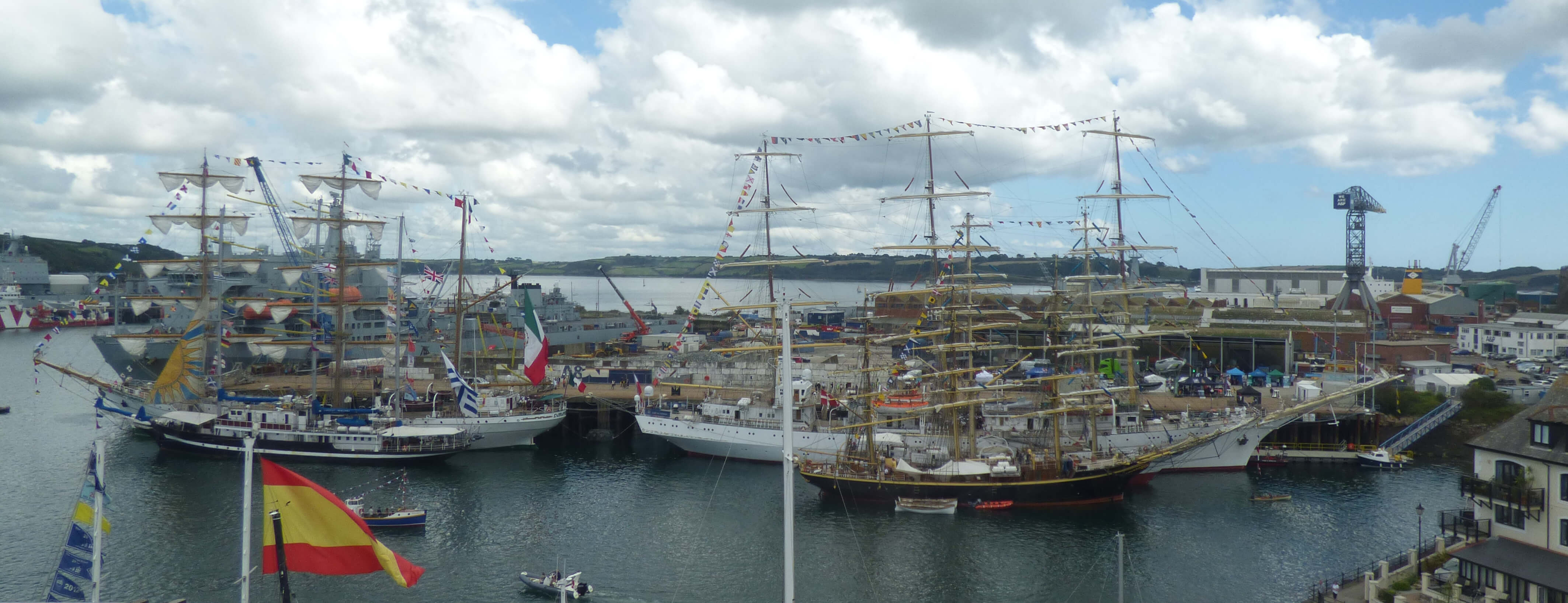
The five ‘A’ Class Talls Ships at A & P Falmouth Ltd, 2023
Photograph taken from the Lookout Tower at National Maritime Museum Cornwall ©LM Vosper
On the eve of the 2023 race, it was announced that all the organisations and partners in the Tall Ships’ Races Magellan-Elcano had made the difficult decision to cancel the Parade of Sail and race start on Friday 18 August following forecasts of “deteriorating weather conditions” and the arrival of Storm Betty as the safety and welfare of the ship’s crews was most important. The ships departed individually on the morning of Saturday 19 August.
The idea first suggested seventy years ago in 1953 to hold a one-off Tall Ships’ Race, has evolved into an exciting event in the sailing calendar which has run since 1956. It has achieved the goal of Bernard Morgan its originator and has fostered understanding, friendly rivalry and teamwork between young people from around the world, as well as giving them seafaring skills.
The Bartlett Blog is written and produced by the volunteers who staff The Bartlett Maritime Research Centre & Library of National Maritime Museum Cornwall. The History of Falmouth Tall Ships was written by Lynne Vosper, a Bartlett Library volunteer.
The Bartlett Maritime Research Centre & Library holds a Collection of over 20,000 volumes and offers access to one of the finest collections of maritime reference books, periodicals and archival material. The Bartlett Blog reflects the diversity of material available in The Bartlett Library.

National Maritime
Museum Cornwall Trust
Discovery Quay
Falmouth Cornwall
TR11 3QY
View Map
See our opening hours
Tel: +44(0)1326 313388
Email: enquiries@nmmc.co.uk